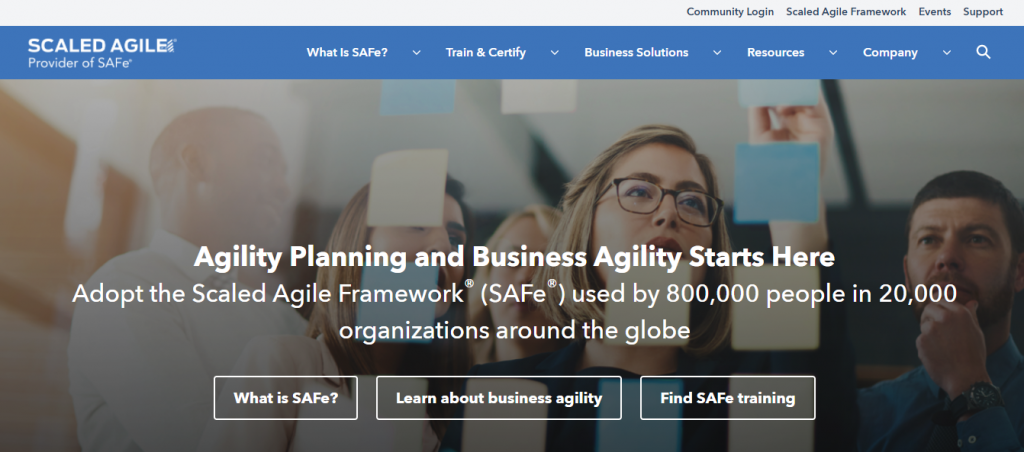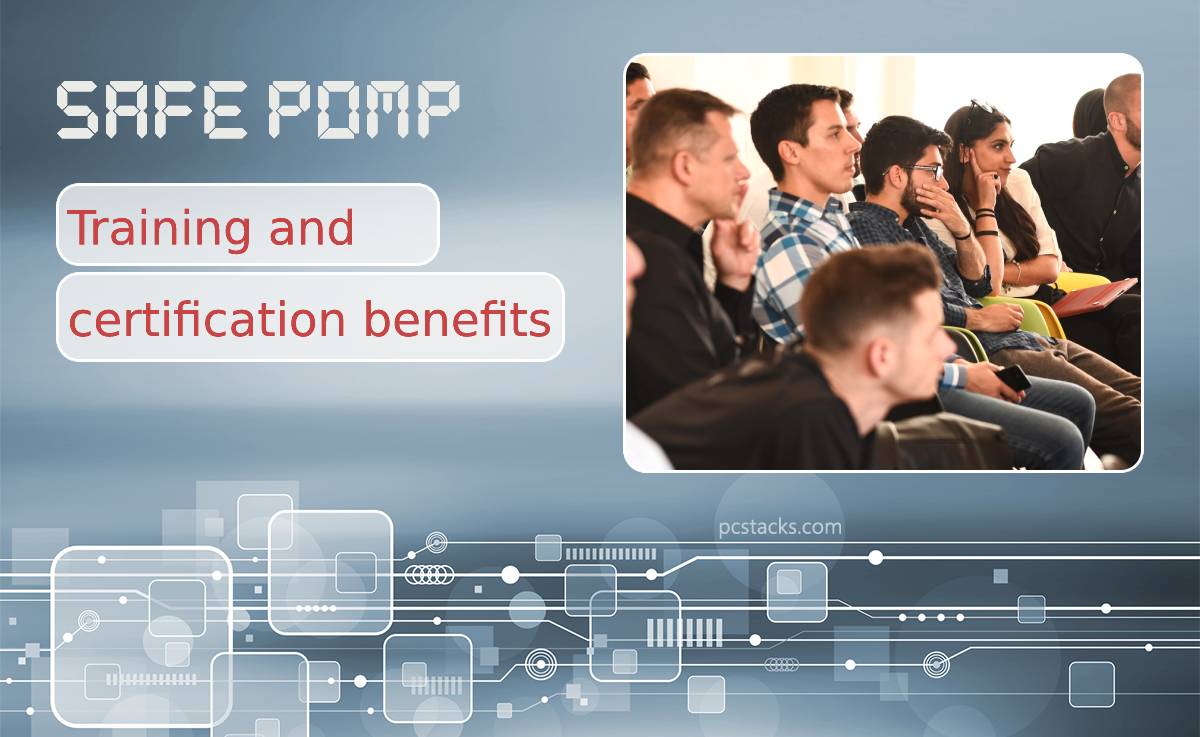Scaled to the point of being almost infinite in scope, Scaled Agile or ASM presents a set of tools and techniques for the software development life-cycle involving business planning, scheduling, resource allocation, and cost control. With this technology approach, an organization can deliver new and innovative products and services in a shorter period while achieving superior quality and reducing costs.

The Scaled Aspen project involves five days of workshops, tutorials, and a one-day master class session where the team will be given information on the tools and techniques of Scaled Agile. In the master class session, members will be allowed to apply the newly learned concepts and skills within the business environment, and experts from within the company conduct all the training.
SAFe Product Owner and Product Manager are the ones who take responsibility for prioritizing the product features and refining the product backlog. In SAFe POPM course certification, you mainly focus on nurturing the business side of the product by delivering skills and creating the product vision. Ensure that you refine the product backlog to make the most effective Agile path for the better accomplishment of business agility.
Table of Contents
SAFe POPM Certification

SAFe POPM is a designation offered to the skilled person who gets certified in this area by the Scaled Agile. Obtaining this certification makes you develop the required skills sets needed to guide value delivery in a lean enterprise.
If you become a SAFe POPM professional, you will be more responsible in applying the Lean-Agile mindset, SAFe principles, and analyzing the customer needs. You will also work on writing epics, capabilities, features, user stories, practices in your organization, and prioritizing the works to deliver value and quality output to the organization.
Scaled to agility, agile provides many advantages to help product owners and product managers. First of all, the agile model can significantly simplify the technical management process by removing the “heads” of the technical project.
Rather than crafting product requirements, product developers spend their time implementing features, testing new code, and quickly addressing issues as they come up. Product owner & product manager involvement are eliminated in the development process. Time and money are effectively saved, which is why many companies choose to use this methodology for managing their software development teams.
How to Get Certified as a SAFe POPM Professional

If you seek to get certified as a SAFe POPM professional, you need to undergo SAFe POPM training in the best institute that provides exceptional SAFe courses.
After that, you need to pass the certification exam. In order to do that, analyze, evaluate the process and make a roadmap of why and how to clear the exam.
Top Benefits You Acquire by a Scaled Agile Certification
Scaled Agile is a software development life cycle methodology that helps product owners understand the value of agile in their organizations. Its core value proposition is, “Agile is good.” This statement is related to the fact that while Agile requires upfront cost savings, it often involves rework and cost overruns during implementation.
On the other hand, when implementing an agile business process, many of the initial concerns related to business processes can be addressed using previously planned methods and practices.
Focus on Continuously Improving and Evolving Your Business Processes

One of the primary benefits of agile is its focus on continuously improving and evolving your business processes and software architecture over time. The business applications are designed to change, adapt, and evolve with fast-moving technology, and business needs change.
Scaled agility enables product owners to address new business needs by leveraging the speed of change and the flexibility of agile development. In other words, the speed of change often requires new approaches and techniques for better design and testing of software.
You Will Gain the Experience of Establishing the Business Requirements
Since Agile is primarily a waterfall process, there are significant benefits in the early stages of the methodology when a product owner implements it. Through this process, you will gain the experience of establishing the business requirements and develop the ability to manage testing and bug risk.
Scaled agile enables the application delivery team to develop and maintain test coverage and response times to meet customers’ demands. In essence, agile provides the ability to adapt and evolve as technologies evolve. When you implement this method, you can leverage the flexibility and robustness of the process while simultaneously incurring fewer costs and better time management.
Involvement of the Product Owner Into the Development Process

Another key benefit of agile is the product owner’s involvement in the development process and the testing and integration phases. The agile team works with the product owner to define a defined scope of work (scan cycle) during which the product meets the customer’s requirements.
It enables the product owner to have a direct influence on the project, as well as play a more active role in the sprint planning meetings. The agile approach to development has a more active involvement of the product owner in the developmental process, allowing the user to make changes more manageable and cost less throughout the project.
Once the project is released, you have an advantage compared to conventional methods, as you can roll out new features and fixes faster than you could in a traditional project. You can also identify and fix problems before they occur, resulting in fewer bugs needing re-bug fixing.
Reduces Costs

Scaled Agile has the potential to reduce costs because it is a ‘smart’ technology. It means that the project is monitored continuously by outside quality assurance teams, which enable continuous improvement and re-designing of processes and architecture.
The process also enables a constant stream of feedback from customers regarding improvements to the process. Since users are the primary users of the agile methodology, they can help shape its future development. Users can also become familiar with the system, increasing their ability to update or upgrade the system on time.
Provides Business Users With the Capability to Gain a Competitive Advantage
Another of Agile’s benefits of scale is that it helps provide business users with the capability to gain a competitive advantage. When the project becomes unmanageable, business users may exit the project, forcing the business to restart from the beginning.
In some cases, the business may fail. However, the project can be quickly restarted with agile by introducing new stages specifically designed for business users and their needs. Through this, a business can gain the tools it needs to compete in the market.
Increases a Business’ Global Market Share
Lastly, Scaled Agile increases a business’ global market share. Since the process enables innovation and constant evolution, the software will have the ability to respond to the needs of new markets and clients.
The flexibility in the process will also allow organizations to customize it to their global business context. As technology shifts, business users will be forced to adapt to these changes. By providing a more rapid response time, is one of the advantages of agile.
Conclusion
In conclusion, the benefits of Agile to a team include the ability to work as a team. Team members can collaborate on projects without the constraints of traditional programming methodologies. It allows for innovation to thrive.
Furthermore, a team can collaborate on a project throughout its life cycle. It facilitates constant evolution and innovation, which are essential to a competitive business environment. It’s about SAFe product owner product manager training course and certification.
Author Bio:
Rajesh Jujare has extensive experience with Inbound marketing for various industries like eCommerce, Manufacturing, Real-estate, education, and advertising. Having worked with a reputed digital marketing agency, he has a stronghold on digital content creation, SME acquisition, and White hat link building techniques. Rajesh has hands-on experience in Influencer marketing and worked with International influencers and content writers.
Linkedin – https://www.linkedin.com/in/rajesh-jujare/
Twitter – https://www.twitter.com/JujareRajesh




